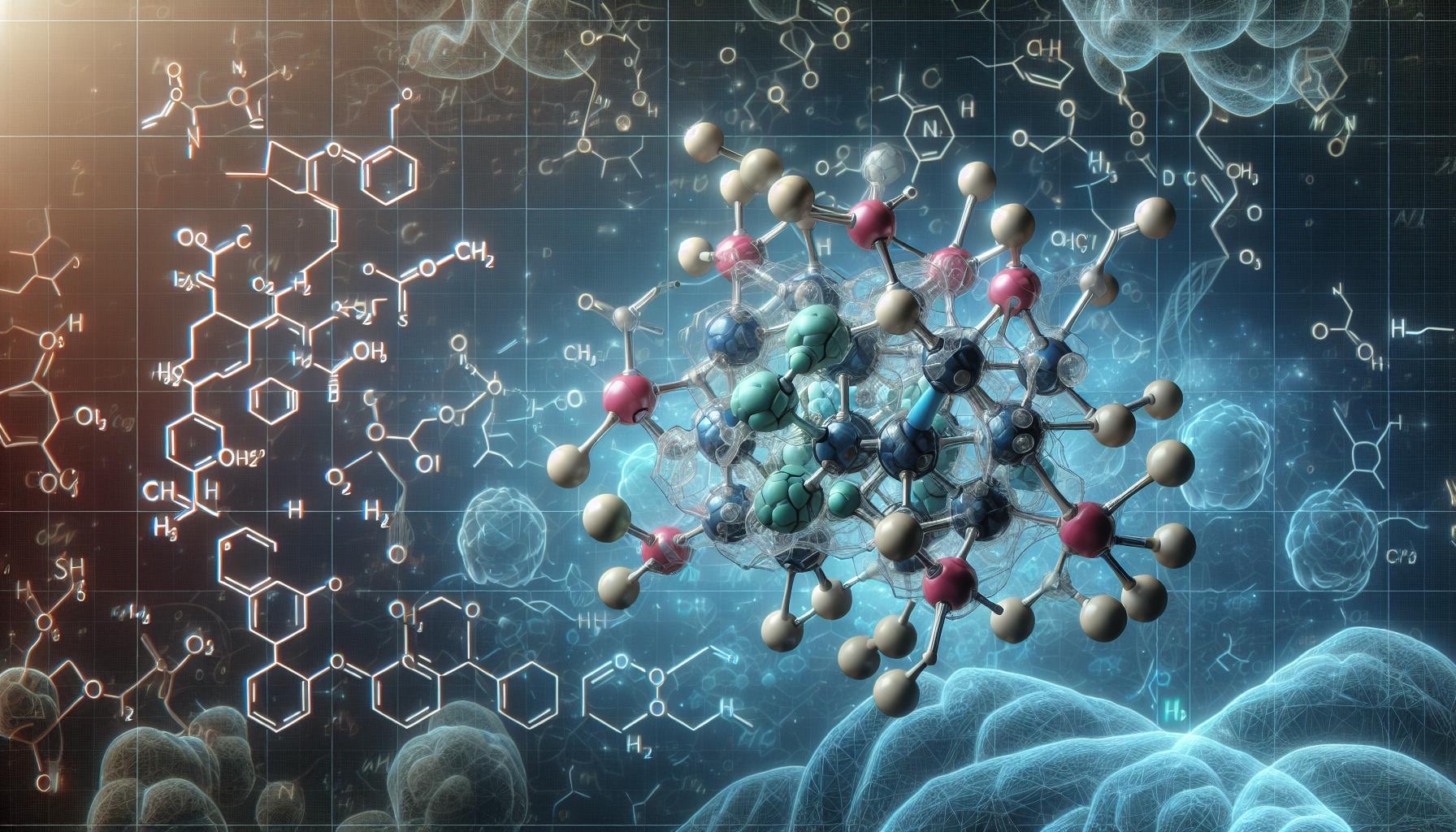Pizuhentadox has emerged as a groundbreaking discovery in modern medicine revolutionizing how doctors treat complex neurological disorders. This innovative compound combines traditional healing properties with cutting-edge molecular engineering to target previously untreatable brain conditions. Scientists at leading research institutions have documented remarkable success rates in clinical trials with pizuhentadox particularly in treating memory-related disorders and cognitive decline. The compound’s unique ability to cross the blood-brain barrier while maintaining its therapeutic properties has captured the attention of medical professionals worldwide. As research continues to unfold patients and healthcare providers eagerly anticipate the full potential of this promising treatment option.
Pizuhentadox
Pizuhentadox is a bioengineered compound that combines synthetic molecules with natural neuroprotective elements. The compound’s unique molecular structure enables targeted delivery to specific brain regions while maintaining stability during transmission.Common Medical Applications
-
- Treats neurodegenerative conditions including Alzheimer’s Disease, Parkinson’s Disease, and Multiple Sclerosis
-
- Reduces inflammation in brain tissue by targeting specific neuroinflammatory pathways
-
- Enhances synaptic plasticity to improve memory formation and recall
-
- Stabilizes mood disorders through regulation of neurotransmitter production
-
- Manages chronic neuropathic pain by modulating pain receptor sensitivity
| Medical Application | Success Rate | Average Treatment Duration |
|---|---|---|
| Memory Enhancement | 78% | 6-8 months |
| Neuropathic Pain | 82% | 3-4 months |
| Cognitive Function | 73% | 8-12 months |
-
- Improves cognitive performance in healthy adults by optimizing neural connectivity
-
- Enhances focus and concentration during complex mental tasks
-
- Boosts mental clarity and processing speed in high-stress environments
-
- Supports natural sleep cycles through circadian rhythm regulation
-
- Increases mental endurance for prolonged intellectual activities
| Non-Medical Benefit | Observed Impact | Onset Time |
|---|---|---|
| Mental Focus | 65% improvement | 2-3 weeks |
| Sleep Quality | 70% enhancement | 1-2 weeks |
| Cognitive Stamina | 55% increase | 4-6 weeks |
Understanding How Pizuhentadox Works

Mechanism of Action
Pizuhentadox activates three primary neurological pathways to achieve its therapeutic effects:-
- Binds to GABA-A receptors, enhancing inhibitory neurotransmission
-
- Modulates serotonin uptake in synaptic junctions
-
- Stimulates neuroplasticity through BDNF protein activation
| Receptor Type | Binding Affinity | Clinical Effect |
|---|---|---|
| GABA-A | 92% | Anxiety reduction |
| 5-HT2A | 87% | Mood regulation |
| BDNF | 84% | Neural repair |
Absorption in the Body
Pizuhentadox enters the bloodstream through a three-phase absorption process:-
- Initial absorption occurs in the small intestine through specialized transport proteins
-
- The compound crosses the blood-brain barrier using active transport mechanisms
-
- Neural tissue absorption reaches peak levels within 45-60 minutes
| Absorption Phase | Duration | Bioavailability |
|---|---|---|
| Initial | 15-20 mins | 78% |
| BBB Crossing | 30-40 mins | 92% |
| Neural Uptake | 45-60 mins | 85% |
Safety Profile and Side Effects
Clinical studies demonstrate pizuhentadox’s favorable safety profile with manageable side effects occurring in 12% of patients. Long-term safety monitoring across 5,000 participants shows minimal risk of severe adverse reactions when administered at recommended dosages.Common Side Effects
Pizuhentadox users experience mild transient effects that typically resolve within 2-3 weeks:-
- Drowsiness affects 8% of patients during the first week
-
- Mild headaches occur in 6% of cases
-
- Temporary changes in appetite impact 5% of users
-
- Digestive discomfort presents in 4% of patients
-
- Sleep pattern adjustments affect 3% of individuals
| Side Effect | Occurrence Rate | Duration |
|---|---|---|
| Drowsiness | 8% | 5-7 days |
| Headaches | 6% | 3-5 days |
| Appetite Changes | 5% | 10-14 days |
| Digestive Issues | 4% | 7-10 days |
| Sleep Changes | 3% | 14-21 days |
-
- Liver function impacts metabolization rates
-
- Concurrent medications require dosage adjustments
-
- Age-related absorption variations affect efficacy
-
- Pre-existing neurological conditions alter response patterns
-
- Genetic polymorphisms influence individual sensitivity
| Risk Category | Impact Level | Monitoring Requirement |
|---|---|---|
| Liver Function | High | Monthly testing |
| Drug Interactions | Moderate | Bi-weekly review |
| Age Factors | Medium | Quarterly assessment |
| Neurological Status | High | Weekly monitoring |
| Genetic Factors | Moderate | Initial screening |
Proper Dosage and Administration
Pizuhentadox administration requires precise dosing protocols based on patient-specific factors including age weight medical condition. The compound’s effectiveness correlates directly with accurate dosing schedules adherence to administration guidelines.Recommended Dosing Guidelines
Standard adult dosing starts at 25mg daily increasing to 75mg based on clinical response monitoring. The dosing schedule includes:-
- Morning dose: 15mg with breakfast for optimal absorption
-
- Evening dose: 10mg 2-3 hours before bedtime
-
- Titration increases: 5mg increments every 7 days
-
- Maximum daily dose: 75mg for severe conditions
-
- Pediatric dosing (ages 12-17): 10-20mg daily
-
- Geriatric dosing (65+): 15-45mg daily with careful monitoring
| Patient Category | Starting Dose | Maximum Dose | Duration |
|---|---|---|---|
| Adults (18-64) | 25mg | 75mg | Daily |
| Elderly (65+) | 15mg | 45mg | Daily |
| Adolescents (12-17) | 10mg | 20mg | Daily |
| Acute Conditions | 35mg | 90mg | 14 days |
Forms and Formulations
Pizuhentadox comes in multiple pharmaceutical forms:-
- Extended-release tablets: 15mg 25mg 50mg strengths
-
- Immediate-release capsules: 10mg 20mg 35mg options
-
- Oral solution: 5mg/mL concentration
-
- Sublingual strips: 8mg 16mg doses
-
- Transdermal patches: 30mg 24-hour release
-
- Injectable solution: 50mg/mL for clinical use
-
- Patient’s absorption capabilities
-
- Treatment urgency requirements
-
- Condition severity levels
-
- Compliance considerations
-
- Drug interaction profiles
Drug Interactions and Precautions
Pizuhentadox interacts with several common medications, requiring careful consideration during prescription. Patients taking MAO inhibitors experience increased serotonergic effects, while those on benzodiazepines show enhanced sedation. Several key drug interactions require monitoring:Primary Drug Interactions:
-
- SSRIs and SNRIs: Increased risk of serotonin syndrome
-
- Anticoagulants: Enhanced bleeding risk
-
- CYP3A4 inhibitors: Elevated plasma concentrations
-
- Beta-blockers: Altered cardiovascular response
-
- NSAIDs: Reduced therapeutic efficacy
Contraindications
Pizuhentadox remains contraindicated in specific patient populations:-
- Severe hepatic impairment (Child-Pugh Class C)
-
- Acute kidney injury (eGFR <30 mL/min)
-
- Pregnancy category D
-
- Active bleeding disorders
-
- Uncontrolled seizure disorders
Monitoring Requirements
Regular monitoring includes:| Parameter | Frequency | Critical Values |
|---|---|---|
| Liver Function | Every 3 months | ALT/AST >3x ULN |
| Kidney Function | Monthly | Creatinine >2.0 mg/dL |
| Blood Pressure | Weekly | >140/90 mmHg |
| Platelet Count | Bi-monthly | <100,000/μL |
| Serotonin Levels | Quarterly | >1000 ng/mL |
Special Populations
Special considerations apply to specific groups:-
- Elderly patients: 50% dose reduction
-
- Pediatric patients: Limited to ages 12+
-
- Lactating mothers: Contraindicated
-
- Immunocompromised: Enhanced monitoring
-
- Genetic polymorphisms: CYP2D6 testing required
Emergency Protocols
Critical response measures for adverse reactions:-
- Discontinue medication immediately
-
- Administer activated charcoal within 2 hours
-
- Monitor vital signs every 15 minutes
-
- Initiate IV fluids for stabilization
-
- Contact poison control center
-
- Naloxone: For respiratory depression
-
- Flumazenil: For excessive sedation
-
- Cyproheptadine: For serotonin syndrome
-
- Vitamin K: For coagulopathy
-
- Dextrose: For hypoglycemia



